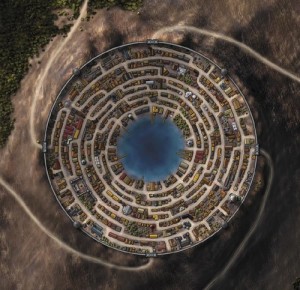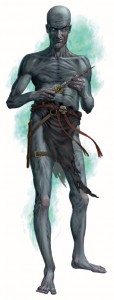So why a D&D Combat conversion?
There are several reasons, at least in my D&D games, that caused combats to take forever. I often thought it might be my bad DM’ing, but I attended a D&D 4.0 game at a local card shop, where we were given 1st level characters and put into a basic encounter. Even with a licensed RPGA DM running it and having players well versed in D&D (even if not that version), it took over 3 hours to finish a 1st level encounter. Who has time for that? I guess I did many years ago, but no so much anymore. My last skirmish had 17 creatures, probably over 100 combined levels of creatures, but took only an hour to finish. Plus, it still offered plenty of strategy, a sufficient amount of dice rolling, and quite a few tense moments.
Here are the main challenges with standard D&D combat as I see it, and what I hope to address with my DDM conversion:
1: Too many options – Even for basic characters, I notice the players in my game constantly referencing the various rulebooks, character sheets, spell lists, etc. for the actions their character can take. Often, a wizard or cleric with a lot of spell options could take 10 minutes picking out something to do. Even when I instituted a ‘30 second turn‘ rule, it was very difficult for some characters to figure out what to do, often resulting in skipped turns and hurt feelings.
In contrast, DDM has all the information about the actions a character can take on a single small stat card. There are a couple of options not mentioned on the card, such as charging, but in general, everything you might want to do is right there.
2: Too much complexity – D&D cleaned up a lot of things over the editions, such as saving throws…remember the charts from Advanced D&D? Now we have 3 types of saves and a lot less bookkeeping. Still, having to refer to even 3 modifiers is an example of something that takes time. D&D (4.0) IMO was a step backward in terms of ease-of-use, with multiple attack types vs. defense types, instead of just a standard AC. While I don’t deny some of these things offer more ‘realism’, I don’t think they provide enough realism to be worth confusing the game. Original DDM uses your level for all saves, removing a ton of bookkeeping from the game. If necessary, there are abilities that can be used that provide a bonus to certain types of saves: for example, there are several creatures that get a general ‘+4 saves‘ to account for their toughness, and it’s easy enough to say a mage gets ‘+2 save vs. spells‘ or similar if players want to have a character be somewhat better at saving vs. things in their area of expertise. Warriors could have ‘+2 save vs. fear effects‘, etc. These bonuses will be right on the players cards so they know to account for it.
3: Too many dice rolls – Every dice roll can take several seconds…after figuring out whether your ranger hit that random minion, now you roll damage. Then recording that damage takes several more. If players are doing damage a hundred times during a session, that can quickly mean a lot of time. While again, static damage as DDM uses may not be as ‘fun’ as rolling dice, it is a lot easier in terms of bookkeeping. Plus, there are still critical hits, smites, sneak attacks and the like to offer some variety in terms of possible damage. This also has the side benefit of reducing variance, e.g. ‘OMG that roflzombiedragon just crit my rogue, rolled max damage and one-shotted him’. Damage is also one of the easier items to convert from D&D to DDM; if a sword does 2d8 damage, it has an average damage value of 9, which is easily rounded to Damage 10 in DDM.
Even prior to my thinking about a D&D conversion, we had some house rules to try to speed up our games. Fighters, for example, could attack level 1 grunts (orcs, goblins, kobolds, etc) once per level of the character, plus any hit by any character on a grunt killed it. This also provided more of the ‘I’m Aragorn and I’m a bad*** who is going to slice through 50 orcs to get to the boss.’
Side benefits to a DDM converson:
4: Balancing encounters – Poor balancing of encounters was definitely my fault, as that wasn’t my strong suit. Other than adding or removing HP or giving a boss an escape spell on the fly, it was more about ‘did this fight challenge the players‘. If it didn’t, critters were made tougher; if the party was about to die, the monsters got fewer hp. That was honestly a very stressful aspect of DMing for me. We had one player who hardcore twinked his characters, one who made decent characters, and several who never really understood the game. As the one who min-maxed all his characters is now GM’ing his own game, he finally understands the challenge he posed in making the game fun for everyone. This goes back to point 1; if everyone has a very simple, easy-to-understand character card, there will likely be fewer vast power level differences among characters. Plus, I plan on making it very clear in the next game I run that my constant tweaking of encounters is going away. If characters TPK, so be it, we’ll make more.
Plus, as long as I have an idea of what a player would ‘cost’ in DDM, knowing whether a party is headed for trouble is easier to spot and maybe deal with before an encounter. With the material I’ll initially be working with (Shackled City Adventure Path), I’ll also start honing my ability to offer different flavors of combat encounters, instead of constant straight up dice-fests.
5: More roleplaying – Often, it felt like the role-playing in our later games was rushed, as we knew that the big combat coming up was going to take a fortnight to finish. Plus, we had one player in particular who liked the role-playing more, and a couple who liked it, but liked fighting more…if this conversion can speed up combat significantly, we could end up with more of both role-playing and combat.
This got pretty long, so I’ll leave it here and discuss some of the specific mechanics I’m working on and the challenges I’m having next time; as a conversion is a lot more work than I initially thought it was going to be, if you have any thoughts, comments or suggestions, please drop me an email, as the more minds the merrier!
Thanks!



Pingback: Iced-In Friday Updates | Playing With Myself